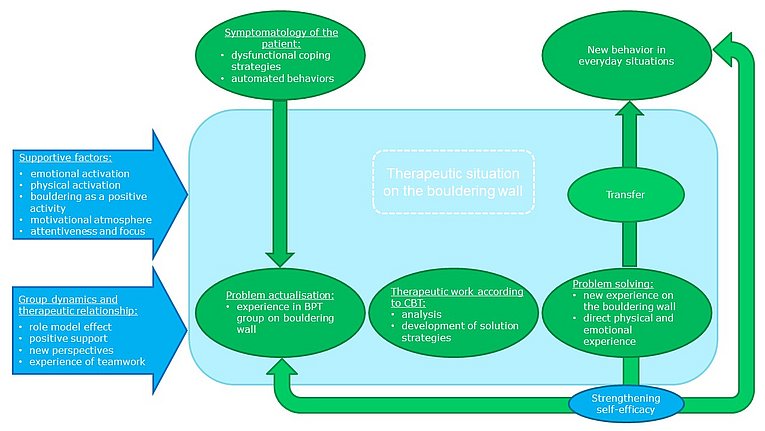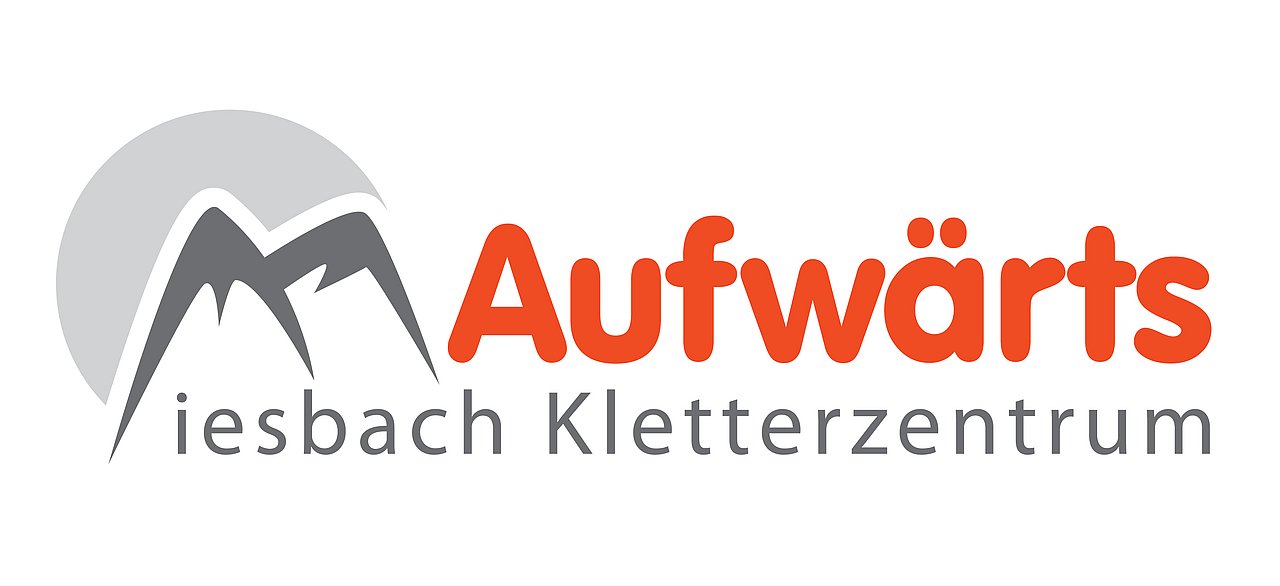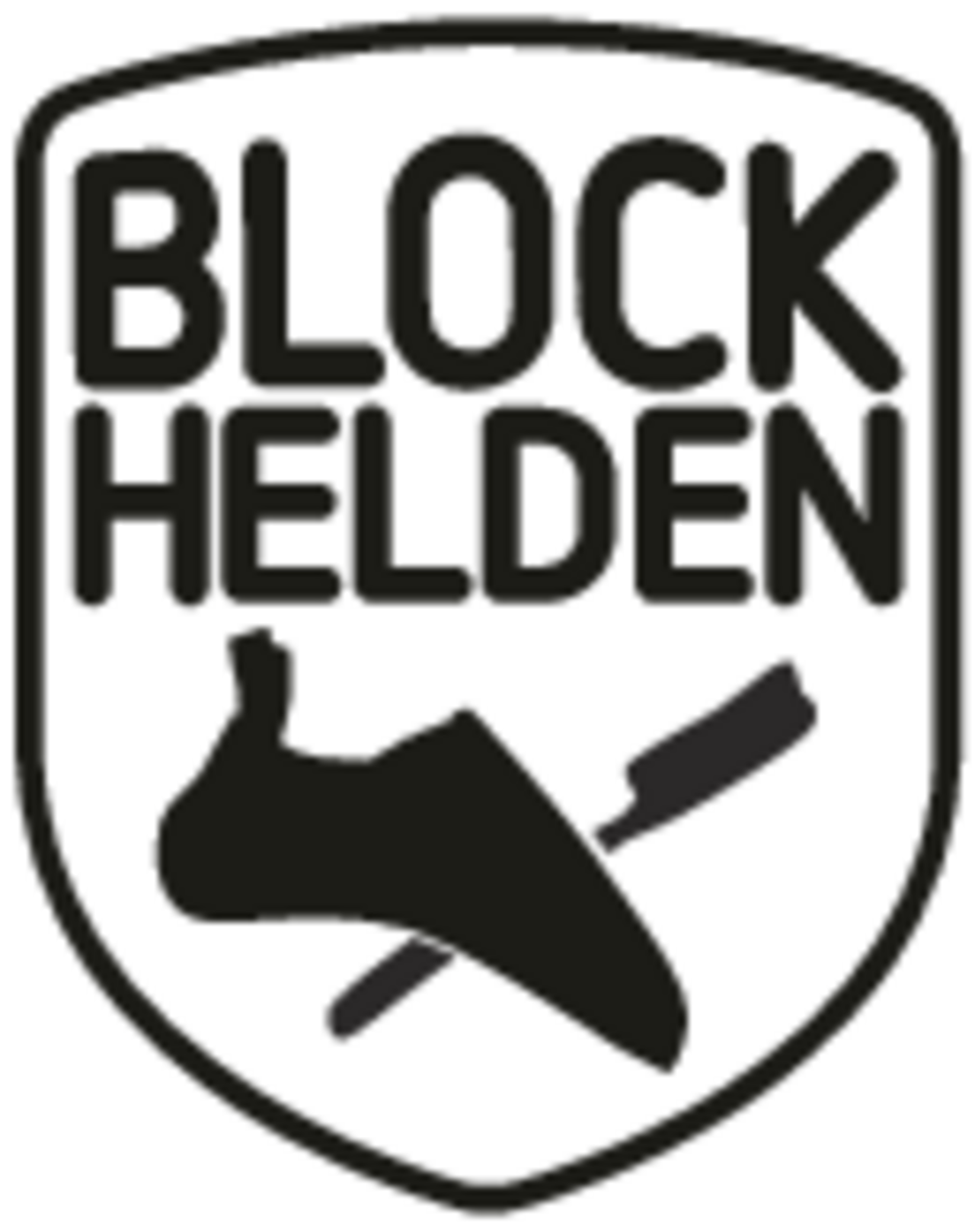Bouldering Psychotherapy
Bouldering Psychotherapy is based on the psychotherapeutic techniques of cognitive behavioral therapy. The aim is to change unfavorable patterns of thinking and behavior and, thus, to bring about a change in feelings (e.g. depressive mood). Bouldering Psychotherapy is very action-oriented, and participants are encouraged to practice as much as possible during the session itself. This is intended to train the implementation of effective forms of learning and action (e.g., increasing self-efficacy, problem solving, exposure training). Specific bouldering exercises thereby offer the opportunity to make visible and to experience one's own "typical" behaviors and problem-solving patterns which might be related to depression.
Through the emotionally activating atmosphere of bouldering (high challenge character, addressing performance issues, interaction with the group), typical behavioral and thought patterns become immediately visible. These patterns can then be discussed with the help of the therapists and questioned as to whether they are helpful. In this process, the group serves as a support and, under certain circumstances, as a model for corrective experiences. Subsequently, alternative ways of behaving and thinking can be tried out when trying the bouldering exercise again. If these are helpful, they can be practiced further and the new experiences can be transferred to everyday problems.
In parallel, bouldering can be used to build up other important skills for coping with depression: newcomers in particular make athletic progress very quickly by learning bouldering techniques. In this way, self-efficacy can be promoted. Furthermore, positive activity is an essential part of psychotherapy for depressive disorders, and bouldering itself can be such a positive activity for participants due to its highly motivating atmosphere, thus counteracting a loss of interest.
Each lesson is started with a mindfulness exercise. This is followed by an introduction to the respective therapy topic before proceeding to the experience part on the bouldering wall. Suitable bouldering exercises are available for each topic. In the lesson on the topic of "Social relationships", for example, participants can experience the feelings and automatic thoughts that occur here, especially with regard to the topics of closeness/distance and responsibility/dependence, when they boulder a route together, connected by a rope. After a short exchange, the hour is concluded with a relaxation exercise.
The overall concept for group therapy for the treatment of depression is designed for a group of ten participants led by at least two therapists. If there is only one therapist, the group size should be reduced to a maximum of five participants. Some exercises can also be singled out as part of a classic behavioral therapy treatment and carried out as individual or partner exercises.









